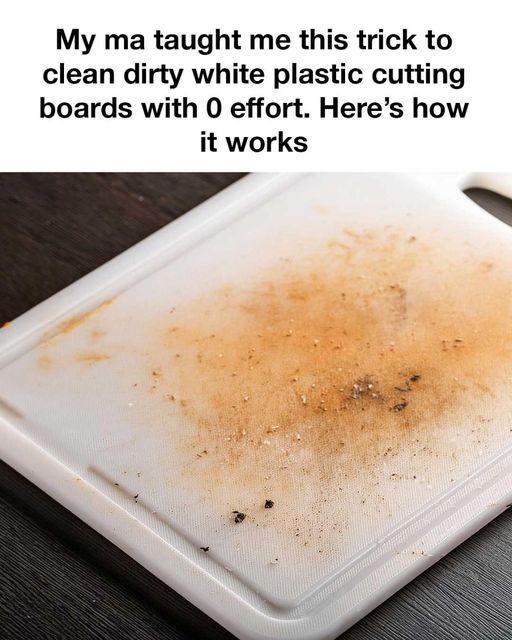ADVERTISEMENT

Mine get so gross! This was so useful!
Baking Soda: Acts as a mild abrasive to scrub away stains and has deodorizing properties to remove lingering smells.
Hydrogen Peroxide: A natural bleaching agent that safely whitens surfaces and eliminates bacteria without harsh chemicals.
Dish Soap: Breaks down grease and food residues, making the cleaning process more effective.
This combination of ingredients creates a powerful cleaning solution that lifts stains, kills germs, and deodorizes all in one go, with minimal effort required.
Additional Tips for Keeping Your Cutting Board Clean
Clean After Each Use: The best way to prevent stains and odors is to clean your cutting board immediately after use. A quick rinse with hot water and soap can prevent food residues from setting in.
Avoid Harsh Scrubbing: Using abrasive pads or harsh scrubbing tools can damage the surface of your cutting board, making it more porous and prone to stains. Stick to gentle sponges or cloths.
Sanitize Regularly: In addition to the cleaning trick above, it’s a good idea to sanitize your cutting board regularly. A simple way to do this is to rub it with a cut lemon or spray it with vinegar. Both methods naturally disinfect and keep your board hygienic.
Avoid the Dishwasher: While it may be tempting to toss your plastic cutting board in the dishwasher, the high heat can cause it to warp over time. It’s best to hand wash your cutting board to maintain its shape and longevity.
Keeping your white plastic cutting boards clean doesn’t have to be a chore. With this simple, effective method my ma taught me, you can remove stains, eliminate odors, and ensure your cutting boards are always hygienic—all with minimal effort. The next time you notice your cutting board looking a little worse for wear, try this trick, and enjoy the results of a fresh, clean cutting board every time.